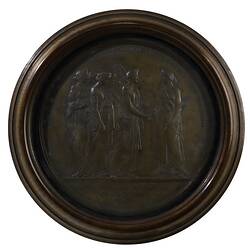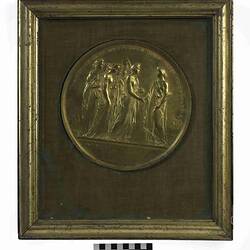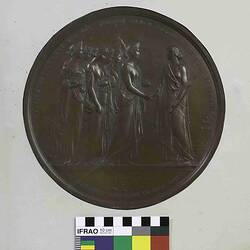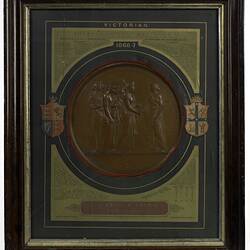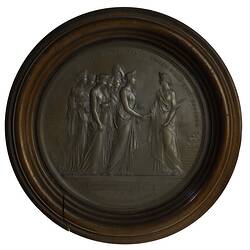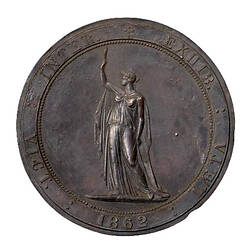Charles Summers was born in Somerset, England, in 1827, son of a builder and stonemason. He received little schooling, and worked from the age of eight. He began working in a mason's yard when the family business failed. He was hard-working and skilful, and by the age of 19 was working at the London studio of prominent sculptor Henry Weekes. He practiced his skills at night, and in 1850, at the age of 23, was admitted to the Royal Academy. The following year he won medals for the best model from life and the best group of historical sculpture. He married in the same year to Augustine Ameot; they had one son, also called Charles.
Summers suffered from ill health, and he decided to migrate to Melbourne in 1852. He built a house before becoming a gold prospector for a short period. On his return to Melbourne his work included direction of sculpture in the chamber of the Legislative Council, completed in 1856. He became a leading figure in local artistic circles, and was founder of the Victorian Society of Fine Arts in 1856. In 1863 he became a member of the commission of inquiry into the promotion of fine arts in Victoria, and the following year became chair of a board of examiners testing drawing instructors for Common Schools.
Summers produced many fine portraits, busts and medals of local notables including Redmond Barry and Charles Sturt. He was the first Australian medallist to challenge the preference for British-struck medals. Awarded the commission for the 1866 Victoria Intercolonial Exhibition, he created a large format (215mm) medallion in neo-classical form. Australia lacked the technology to produce a medal of this size, so Summers used an electroforming technique that deposited a thin layer of copper onto the artwork. The copper was lifted off and finished; the original artwork could then be used again. The end result was thin and fragile, but appeared like a fine medallion. Although never repeated in Australia, this technique was used for some art medals in Europe in the same period.
Summers sculpted the Burke and Wills memorial in 1864-65. To represent First Peoples accurately he lived amongst them for six weeks. His memorial was in turn apparently copied by Thomas Stokes in his expedition medal.
In May 1867 Summers left Melbourne for England. He went on to Rome, where he made a successful career. His last work was a marble group of Queen Victoria, Prince Albert and the Prince and Princess of Wales, commissioned by the National Gallery. Suffering from acute goitre, he died after an operation in Paris on 30 November 1878.
References:
Sharples, John P. (1990). Medals as Art: Australia and the Meszaros Tradition.
Australian Dictionary of Biography website http://adbonline.anu.edu.au/adbonline.htm
More Information
-
Keywords
-
Localities
-
Authors
-
Article types
![[NU 18367] Medal - International Exhibition, London, Australia, 1862 (AD) (MEDALS)](/content/media/30/177080-small.jpg)
